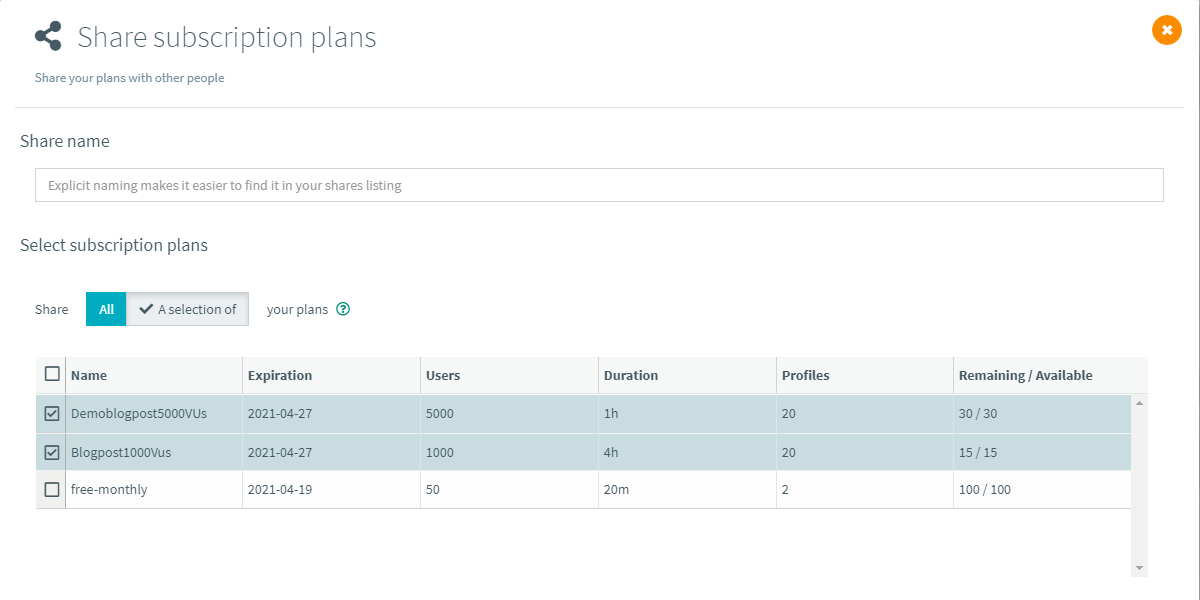
OctoPerf v12.2 - Flexible license sharing, improved VU validation, XPath and JQuery
Summary¶
OctoPerf v12.2 introduces flexible license sharing, improved virtual user validation and new native processors for XPath and JQuery.
- Teams can now share only the subscriptions they choose and manage everything autonomously.
- Validation becomes more powerful with multi-iteration runs, detailed timing metrics, and one-click updates of recorded requests.
- New XPath1, XPath2, and CSS/JQuery extractors expand correlation capabilities directly within OctoPerf.
- Virtual users can now be safely copied across projects, and CSV variables support skipping lines for faster dataset testing.
- Several documentation updates clarify monitoring, test startup internals, JSR223 scripting, and Azure DevOps CI integration.
Table of Contents¶
- Improvements
- Share a license
- VU validation
- New processors
- Copy VU to another project
- CSV skip lines
- Documentation
- Full changelog
Introduction¶
We've been working a lot behind the scenes for this release because we wanted to address the license sharing issue. Up until today it was only possible to ask us to share the license for you and sharing could only share every license you own. We had to completely refactor the way we handle licenses to allow you to decide on your own to share all or a fraction of your subscriptions.
But that's not all, we also worked on a VU validation with multiple iterations. XPath and JQuery processors were only available when importing from JMeter but now you can create them directly in OctoPerf's UI and use them in your automatic correlation rules. And many other features that we will highlight in this post.
Improvements¶
Share a license¶
The main course is the new license sharing system. It used to be possible to share a license by asking our support team to share all your licenses with another account, but even if we always answer fast that was not convenient and even worse, you had to share all your licenses with the new account.
For these reasons, we've worked on a system that is fully flexible, allowing you to share some or all your subscriptions with another OctoPerf account:

Sharing all licenses can still be interesting, in particular if you plan on regularly subscribing to new plans and you need your team to have access to them. Otherwise you can just share the ones that matter and keep your free tier just to yourself.
Whatever you choose, you'll also be able to see the shares you've created and to manage them (if you are the owner).
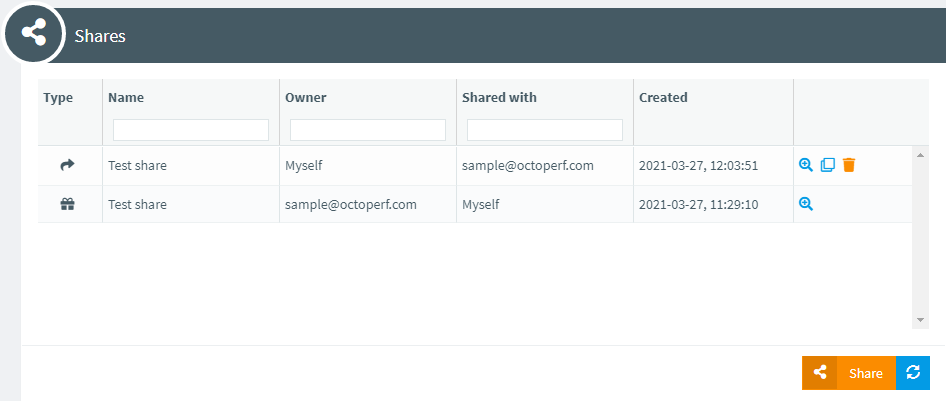
A simple zoom on a share tells you which subscriptions it contains:
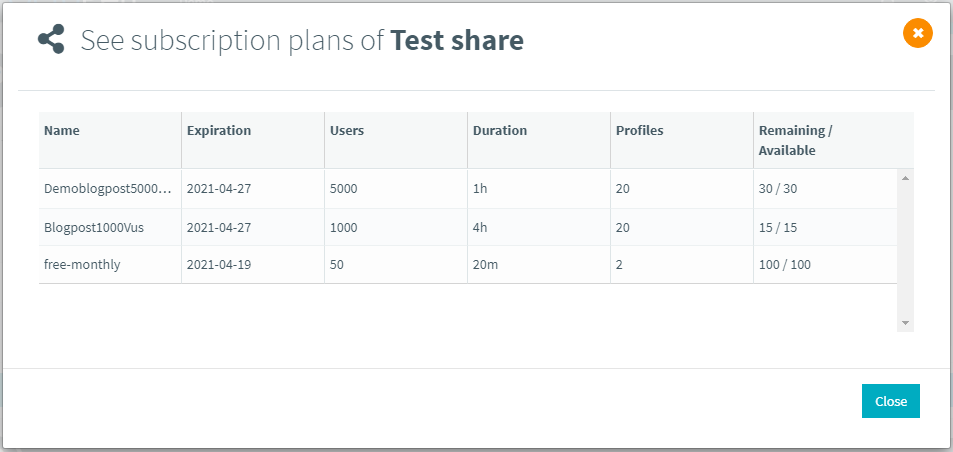
Whether you're just collaborating with a couple of colleagues or you're part of a large team in a big company, this system will guarantee you can keep track of your licenses and manage everything yourself.
VU validation¶
The virtual user validation is the mechanism allowing you to run one virtual user from the design screen to debug your scripts. We've received a lot of feedbacks about it and we decided it was time to implement them.
Multiple iterations¶
First we added a new option under its advanced menu that allows you to run more than just one iteration. This way you can check if your virtual user will continue to work when it switches to the next line of your CSV or if your logout/login works properly.

Note that we've limited it to 5 iterations and 20 minutes, typically to avoid abuse of validate VU tests.
Timing metrics¶
The response section of HTTP requests will not only show the results of your many iterations, but also the timings for each response:
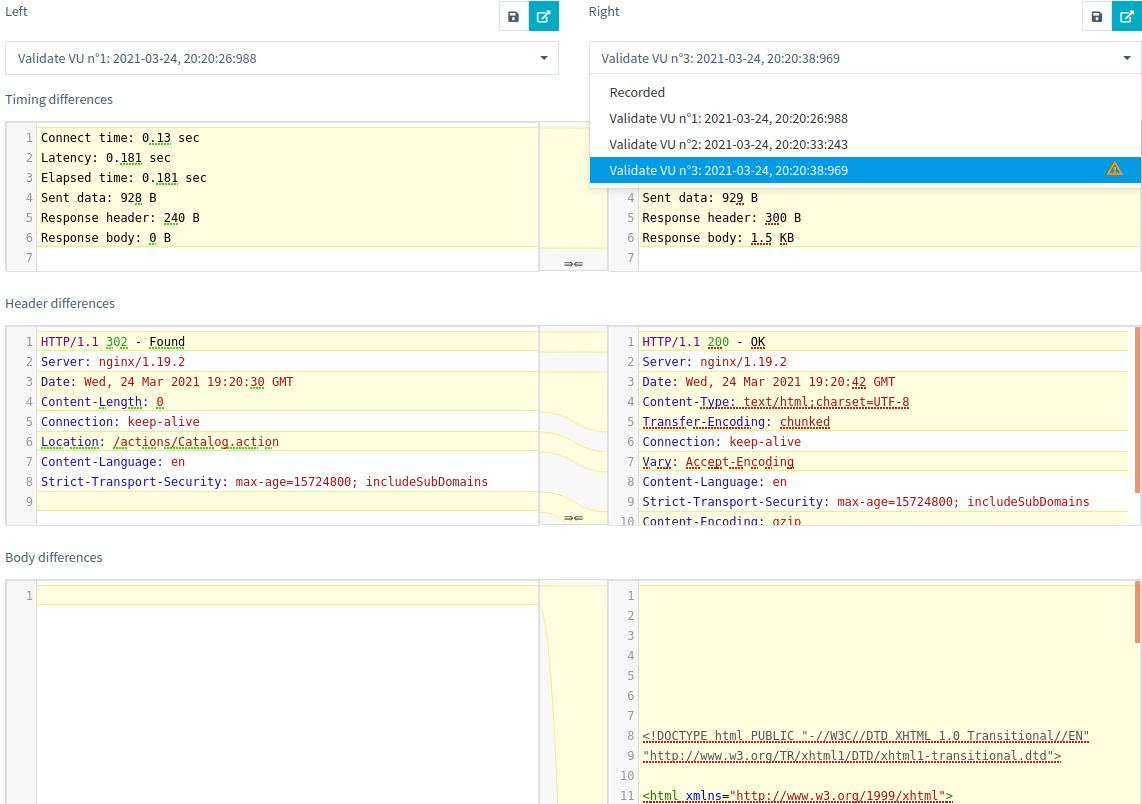
That can be especially helpful when working on your scripts and setting up SLAs. Also if you see the validation sticks on the same request for a long time you can investigate the timings to see if that's the issue.
Update recorded¶
Last but not least, we've added a button to override the recorded request/response with the new one from a validation:
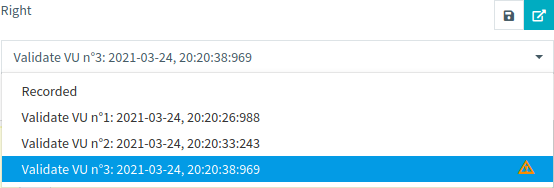
Using this feature you can update your virtual user without the hassle of recording again.
New processors¶
Previously we only had Regex and XPath post processors available in OctoPerf. Of course it was possible to import all others from a JMX but it required using JMeter. That's why we've added the most used processors to the roster in this release.
It is important to note that all of these can also be used as correlation rules, meaning you can automate the search and replace for these values.
XPath1¶
While XPath1 shouldn't be used anymore since the new XPath2 has been released. It is still used in some situations and we wanted to have retro compatibility with earlier implementations.

If you want a walkthrough of all the possibilities it is better to have a look at our documentation on this processor. But for a quick overview, here's what it looks like in action:
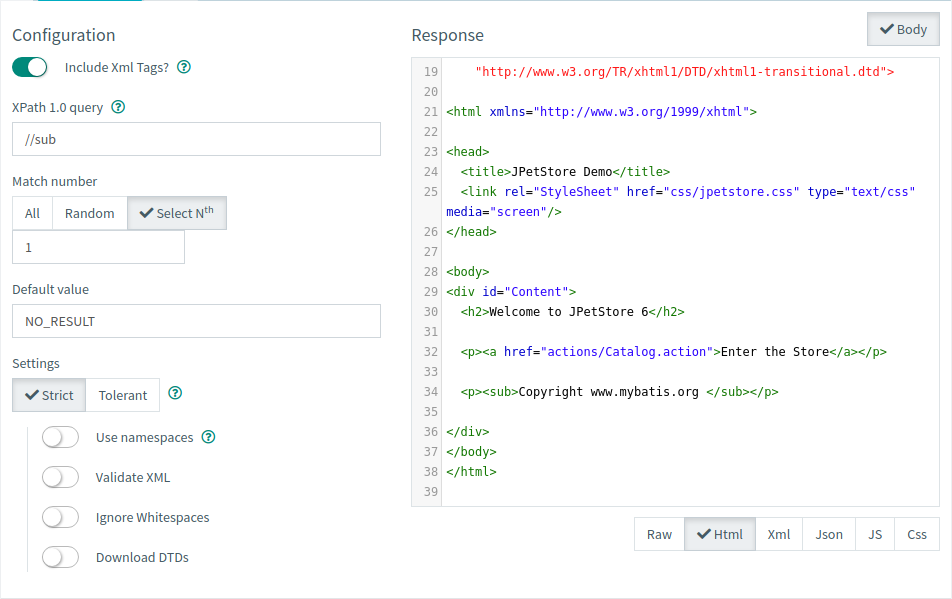
XPath2¶
XPath2 is the way to go when you need to extract from XML content. It is better optimized than XPath1 and since it's a more recent implementation it has support for modern applications:

The main difference is that you must specify the Namespace used in your XML, usually available in the xmlns parameter, we've made sure to explain all this in our documentation:
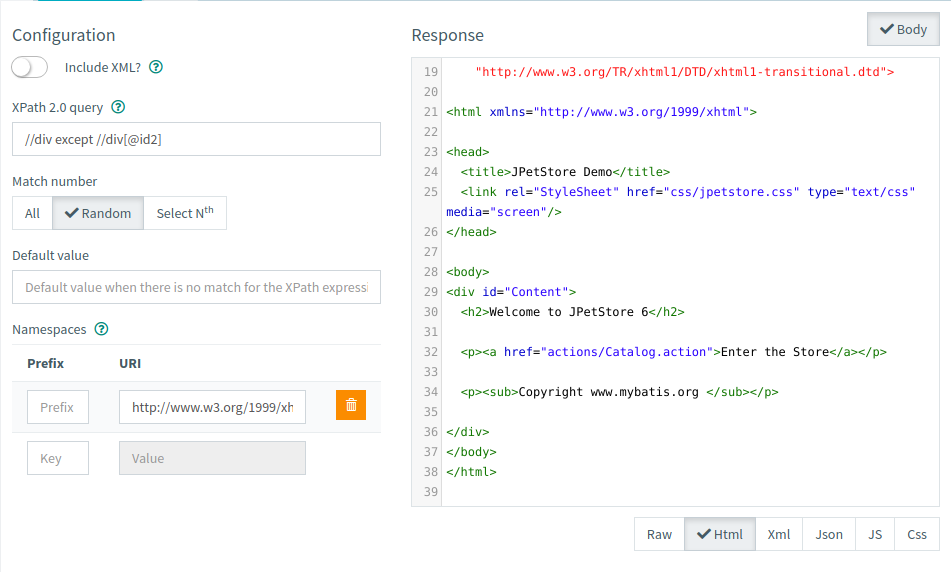
CSS/JQuery¶
The last of the new processors is the CSS/JQuery, one that can be very useful when dealing with HTML:

The configuration details are covered in our documentation as usual, but here is an overview:
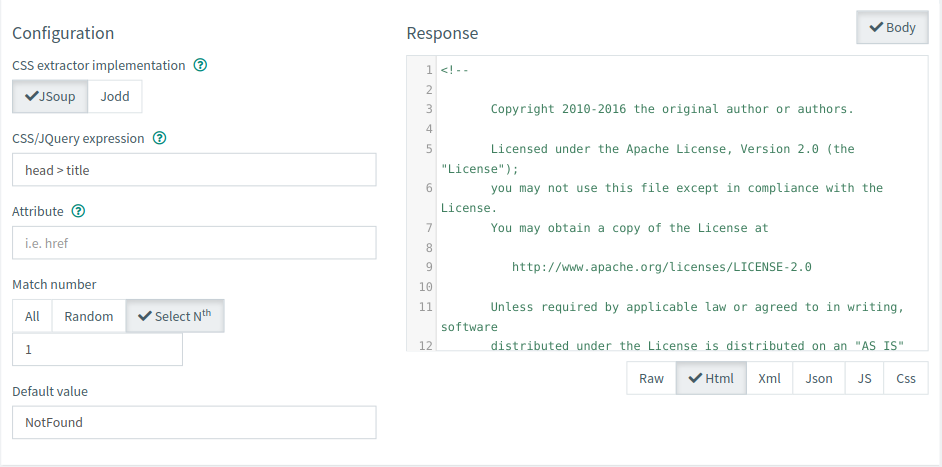
Copy VU to another project¶
Virtual user copy has always been a difficult subject for us. Mostly due to the fact that you can have several virtual users in a project and you might want to copy only one of them. The big problem is with all the dependencies around each virtual user. Typically you can have files nested in pretty much every possible node of the virtual user, module controllers/test fragments, plugins, variables, etc... And on top of that the same can be true in the destination project.
We've implemented a default copy that is safe, meaning not overriding existing content in the destination project, but you can activate an override if required:
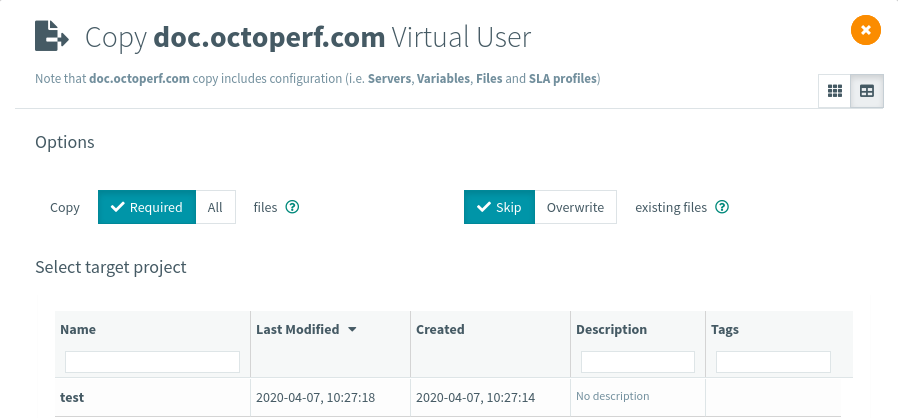
This will of course copy everything required by your virtual user, including recorded requests/responses if any.
CSV skip lines¶
A feedback we've often had on CSV variables was that it's not possible to skip lines when you want to test your dataset. To answer that we've added a new offset input on the CSV variable configuration:
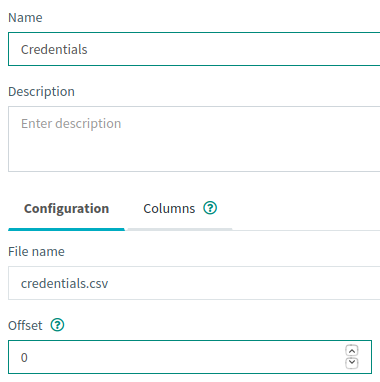
It even updates the overview you have in the columns tab.
Documentation¶
Since our last release we've created/updated some important documentation pages:
Agent monitoring¶
Now we go to great length, describing possible cause for monitoring alert on load generator and how to handle them:
https://api.octoperf.com/doc/analysis/edit-bench-report/agent-monitoring/
Detailed test starting process¶
If you wonder what OctoPerf does behind the scenes when starting a new test, here it is:
https://api.octoperf.com/doc/runtime/test-startup-process/
Better JSR documentation with examples¶
Our JSR223 page had examples but written in different languages, some were pre/post processors, other script actions. We've reworked it and updated all the scripts so that it now makess more sense, and we've even added a few examples:
https://api.octoperf.com/doc/design/edit-virtual-user/action-types/jsr223-actions/
Azure devops CI process¶
Here's a step by step guide on how to use our Maven plugin from Azure devops:
https://api.octoperf.com/doc/runtime/edit-scenario/integrations-automation/ci-cd/ci/azure-devops/
Full changelog¶
For the complete list of fixed bugs, please refer to OctoPerf 12.2 Release Notes.
